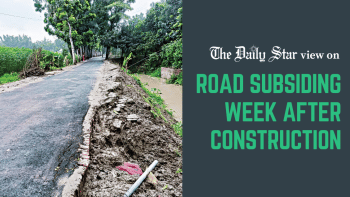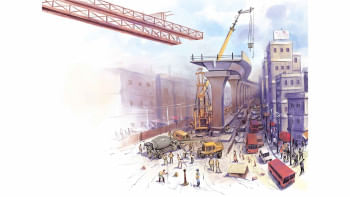When bridges are not bridge-y enough

A bridge is a useful structure, yes, but in Bangladesh's context, it is increasingly emerging as a metaphor for the widening – or, shall we say "unbridged"? – gap between the promise and the reality of our development projects. Forget the mega construction projects, where the stakes are much high and are thus better planned and executed. But in small, lower-budget projects meant to serve local communities – such as bridges, culverts, and roads – the level of scrutiny is not the same. Hence, often they suffer from poor planning and lax quality control, leading to suffering and a wastage of public resources.
Bridge, both as a structure and a metaphor, comes to mind because of the frequent media coverage of poorly designed, district-wide bridge development projects undertaken in recent years. The latest report in this regard, published by this daily on Thursday, highlights how this has been a continuing trend. It reveals the woeful state of two newly constructed bridges, over a canal in Lalmonirhat's Kaliganj upazila, which have been left unfit for use due to the absence of approach roads on either side of the bridges. As a result, both structures – built close to each other at a combined cost of about Tk 1.5 crore by the Bangladesh Agricultural Development Corporation (BADC) and the Ministry of Disaster Management and Relief, respectively – have turned out to be nothing more than symbolic structures, failing to serve their intended purpose. Today, they stand as a glaring example of mismanagement and negligence.
The question is, what's the point of building a bridge if there are no connecting roads to make it accessible for the users? A project official, however, claims that there were connecting roads but those were "washed away" by a recent flood, which, ironically, only confirms our thesis of poor planning and workmanship as well as lax quality control. It is clear that these bridges and supporting structures were built without their long-term functionality in mind. This is the second time in July that we have had reports of such ill-conceived bridge projects, the first being at the Ajmiriganj upazila of Habiganj, where the lack of approach roads has also left villagers stranded. Last month, The Daily Star also reported how a bridge built five years ago in Tangail's Basail upazila – which then tilted under pressure from floodwaters just before its inauguration – has been left unusable ever since.
These incidents are becoming too frequent to be considered "isolated". Often, such small projects are undertaken without comprehensive feasibility studies and executed in a manner that renders them practically useless after a certain time. This is totally unacceptable. We urge the higher authorities to critically examine this trend and take all measures necessary to stop it.


 For all latest news, follow The Daily Star's Google News channel.
For all latest news, follow The Daily Star's Google News channel. 










Comments